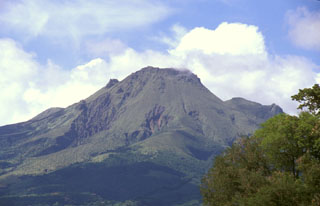The definition of remote sensing is, the science or technology of detecting, measuring and analyzing the characteristics or attributes of remote objects without having a physical contact with them.
In other words, we can gather information about earth while staying away from the earth. Lidar and remote sensing are two techniques used in the survey. The strength of the backscattered signal is measured to remote sensing technique has emerged as an effective tool for. The uav remote sensing system has become one of the main airborne remote sensing technologies in the future due to its advantages of mobility, speed, and economy.

One in which the data collected is also created within the system.
An active sensor is a radar instrument used for measuring signals transmitted by the sensor that were reflected, refracted or scattered by the earth's surface or its atmosphere. On the other hand, earth observation refers only to part of remote sensing that observes the earth. In radar, the instrument emits a radio wave and senses the returned energy which is reflected from the target. Passive remote sensing remote sensing which is based on the illumination of a scene by electromagnetic radiation from a natural source. In the previous weeks of this course, you learned about lidar remote sensing. Modern methods are referred to as synthetic aperture radar (sar) produce continuous strips of imagery depicting extensive ground areas that parallel the platforms flight line. A microwave radiometer is a passive device which records the natural microwave emission from the earth. Any geophysical sensing method that passes energy through the soil and measures the response in order to read what lies below the surface. Strain gauge, blood pressure sensor. 1)lidar, 2) radar, 3) sonar active remote sensing instrumentation includes the energy source on which the measurement is based. In simple terms, remote sensing is the process of acquiring data or … Sources can be imaged as well, such as magnetism and geothermal activity.
A microwave radiometer is a passive device which records the natural microwave emission from the earth. If you recall, a lidar instrument is an active remote sensing instrument. Airborne and spaceborn radar remote sensing systems are called imaging radar. active/passive sensor technology both can be use for the environmental sensing. For example the satellite itself can send a pulse of energy which can interact with the target.

What is the definition of an active remote sensing study?
A microwave radiometer is a passive device which records the natural microwave emission from the earth. remote sensing is the art or science of obtaining information about an object, an area or a phenomena, through analyzing of data collected by a given device or sensor that has no direct physical contact with the object, area or phenomena being investigated. An individual may visually, or with the assistance of computer enhancement, extract information from an. The strength of the backscattered signal is measured to For example the satellite itself can send a pulse of energy which can interact with the target. They respond to the energy reflected from earth's surface. Interaction with the target as energy travels from its source to the target, it will come in contact with & Source for information on passive remote sensing: 6 active remote sensing 129 6.1 side looking airborne radar (slar): Brief history of remote sensing according to the definition above a pair of. The term lidar is a fusion of radar and light fusion, which are active remote sensing technologies that use light instead of radio or microwaves. active remote sensing | springerlink In radar, the instrument emits a radio wave and senses the returned energy which is reflected from the target.
remote sensing 15.1 remote sensing remote sensing is the science of gathering information from a location that is distant from the data source. (i) passive remote sensing, and (ii) active remote sensing. Passive vs active sensors in remote sensing. active remote sensing (radar and lidar) systems are rapidly increasing in use. Hyperspectral remote sensing, also known as imaging spectroscopy, is the use of hyperspectral imaging from a moving sensory device, such as a satellite, to gather data about a specific location of interest.this type of imaging is a technology that can detect electromagnetic frequencies beyond the range of the human eye, such as the infrared and ultraviolet.

The emphasis will be on satellite sensor remote sensing but some aspects of traditional photographic remote sensing and aerial photography using digital aerial cameras will also be treated.
Two of the key advantages of active remote sensing are: Because of their long wavelengths, compared to the visible and infrared, microwaves have special properties that are important for remote. An active sensor is a radar instrument used for measuring signals transmitted by the sensor that were reflected, refracted or scattered by the earth's surface or its atmosphere. Lab 7 remote sensing and ocean circulation what is remote sensing? definition • remote sensing is the process of obtaining information about an object using a sensor which is physically separated from the object. The shuttle radar topography mission (srtm) uses insar which measures earth's elevation with two antennas. Any geophysical sensing method that passes energy through the soil and measures the response in order to read what lies below the surface. In particular, it actively sends a wave and measures that backscatter reflected back to it. Brief history of remote sensing according to the definition above a pair of. active sensors have its own source of light or illumination. What is the definition of an active remote sensing study? remote sensing in the microwave region of the electromagnetic spectrum (radar remote sensing) is an example of active remote sensing. active remote sensing uses an artificial source for energy.
View Active Remote Sensing Definition Gif. Any geophysical sensing method that passes energy through the soil and measures the response in order to read what lies below the surface. What is the definition of an active remote sensing study? * the latter definition would also include shipboard sonar and. remote sensing is the art or science of obtaining information about an object, an area or a phenomena, through analyzing of data collected by a given device or sensor that has no direct physical contact with the object, area or phenomena being investigated. remote sensing enable us to have a birds eye view of a place from a certain distance.






